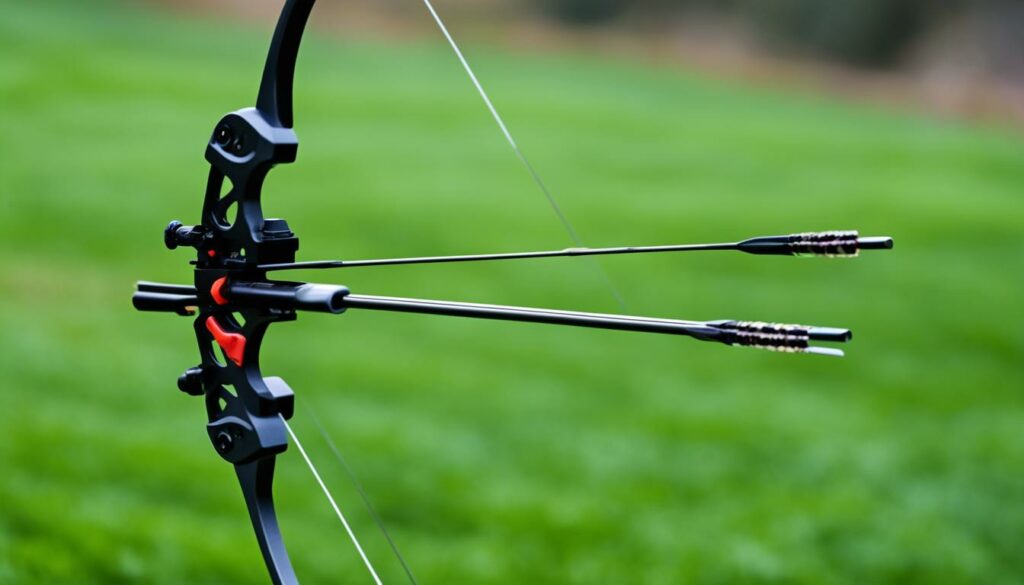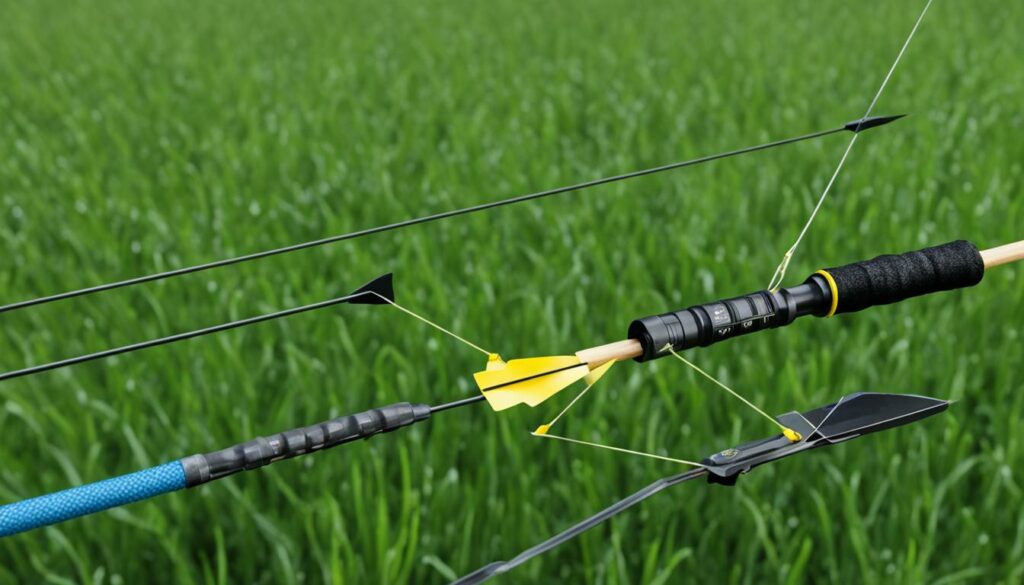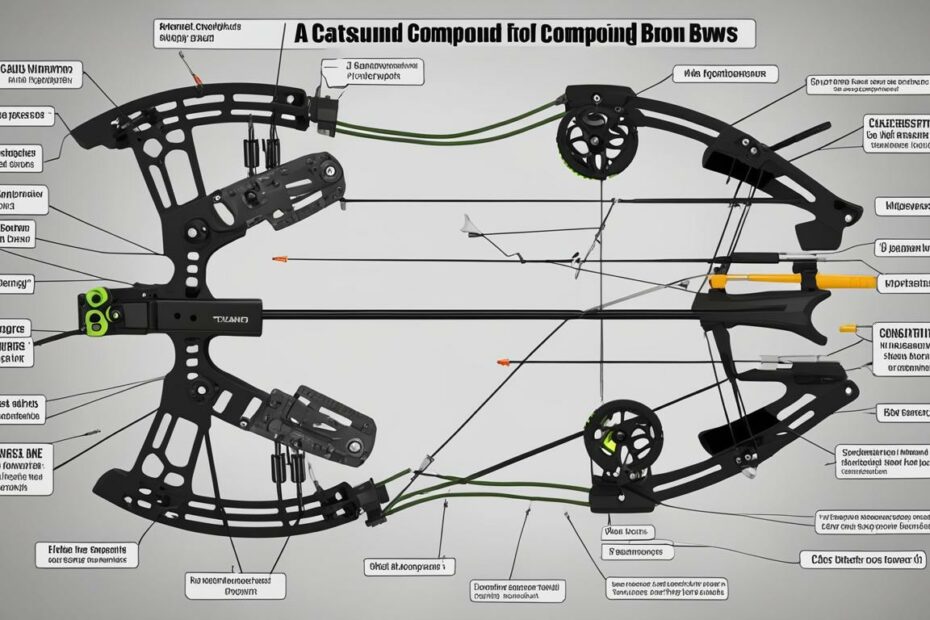Tuning a compound bow is essential for achieving optimal accuracy and performance. Whether you are a beginner or an experienced archer, understanding how to tune your compound bow is crucial for consistent shooting.
This ultimate guide will provide step-by-step instructions, expert tips, and techniques to help you tune your compound bow like a pro.
The Importance of Bow Tuning
Bow tuning plays a vital role in maximizing the accuracy and performance of your compound bow. You can achieve consistent and precise shots by fine-tuning your equipment to meet your specific shooting style and needs. Neglecting the importance of bow tuning can result in erratic arrow flight, diminished accuracy, and frustration on the range or in the field.
Properly tuned bows ensure optimal synergy between the bow, arrow, and archer, allowing for seamless execution and enhanced shooting results. The benefits of bow tuning are manifold:
- Increased Consistency: Bow tuning helps eliminate inconsistencies in arrow flight, ensuring that each shot behaves predictably. This consistency enables archers to repeat their shots, accurately leading to tighter arrow groups.
- Tighter Arrow Groups: When a bow is accurately tuned, it allows arrows to hit the mark, resulting in tighter groups consistently. This precision is especially critical for archers participating in competitions or hunting activities.
- Enhanced Shooting Confidence: Knowing that your bow is tuned correctly boosts your confidence as an archer. With the assurance that your equipment is optimized for performance, you can focus on your shooting technique and trust that your shots will be on target.

Step-by-Step Bow Tuning Process
To achieve optimal accuracy and performance with your compound bow, following a step-by-step bow tuning process is essential. By meticulously adjusting various components, you can ensure that your bow is perfectly calibrated for your shooting style. Here are the key steps to tuning a compound bow for accuracy:
Step 1: Inspect and Prepare Your Bow
Before starting the tuning process, thoroughly inspect your compound bow for any signs of damage or wear. Check the limbs, strings, cables, cams, and other critical components. Make sure everything is in good condition and properly lubricated. Additionally, ensure you have all the necessary tools and equipment, such as an Allen wrench set, arrow rest, bow press, and paper tuning kit.
Step 2: Adjust the Brace Height
The brace height refers to the distance between the bowstring and the bow’s grip at rest. Start by following the manufacturer’s recommendations for the ideal brace height for your specific bow model. Use an Allen wrench to adjust the brace height by twisting the limb bolts equally clockwise or counterclockwise. Make small adjustments and test the bow’s performance after each change.
Step 3: Set the Nock Point
The nock point is the location on the bowstring where the arrow is attached. It is crucial to have the correct height and position of the nock point to achieve consistent arrow flight. Use a bow square to measure and adjust the position of the nock point. Make small adjustments, ensuring the arrow is level and aligned.
Step 4: Paper Tune Your Bow
Paper tuning is a crucial step in the bow tuning process. It helps to identify any arrow flight inconsistencies and guide further adjustments. Set up a paper-tuning target and shoot an arrow through it from 6-8 feet. Analyze the tear pattern on the paper to determine if any adjustments are required. If the tear is angled, adjust the arrow rest; if it is too high or too low, adjust the nock point or draw weight.
Step 5: Adjust the Arrow Rest
The arrow rest plays a significant role in arrow flight and accuracy. Make sure the arrow rest is properly aligned and adjusted. If available, use micro-adjustment features to fine-tune the rest. Consider using a drop-away rest for improved arrow clearance and reduced contact with the bow during the shot.
Step 6: Check and Adjust Cam Timing
If your compound bow has dual cams, checking and adjusting their timing is essential. Ensure that the cams are rotating simultaneously and reaching full draw simultaneously. If you are unsure about the timing adjustments, use a cam timing tool or consult a professional bow technician.
Step 7: Fine-Tune Draw Length and Weight
Your compound bow’s draw length and weight should be adjusted to suit your shooting style and comfort. Use the manufacturer’s guidelines or seek assistance from an experienced archer or bow technician. Make small adjustments to achieve the desired draw length and weight, ensuring proper form and consistent shooting.
Following these step-by-step bow tuning instructions will help you optimize the performance and accuracy of your compound bow. Remember to make small adjustments at a time and test the bow’s performance after each change to identify the impact on arrow flight. With patience and practice, you will achieve a finely tuned compound bow that enhances your shooting experience.
Common Bow Tuning Issues and Solutions
While tuning your compound bow, you may encounter a few common issues that can affect its performance and accuracy. It’s important to troubleshoot and address these problems to ensure your bow is tuned correctly. Here are some common bow-tuning issues and their solutions:
1. Arrow Rest Alignment
Issue: Misalignment of the arrow rest can cause inconsistencies in arrow flight, leading to inaccurate shots.
Solution: Check the alignment of the arrow rest and adjust it if necessary. Ensure that the arrow is positioned correctly on the rest, and make the required adjustments to achieve perfect alignment.
2. Nocking Point Position
Issue: Incorrect nocking point position can affect arrow flight and consistency.
Solution: Ensure that the nocking point is in the correct position relative to the center of the bowstring. It should be consistent and allow the arrow to sit comfortably on the string.
3. Cam Timing and Synchronization
Issue: Improper cam timing and synchronization can lead to arrow flight inconsistencies and reduced performance.
Solution: Check the timing and synchronization of the cams. Make adjustments as needed to ensure both cams reach their maximum draw position simultaneously.
4. Peep Sight Alignment
Issue: A misaligned peep sight can affect your aiming and accuracy.
Solution: Adjust the position of the peep sight to align perfectly with your eye when at full draw. This will ensure consistent sighting and accuracy.
5. Limb and Riser Alignment
Issue: Misalignment between the limbs and riser can lead to torque and affect arrow flight.
Solution: Check the alignment of the limbs and riser. Adjust and tighten any loose components to ensure proper alignment and minimize torque.
6. Issue: Incorrect Bow String and Cable Tuning
Issue: Poorly tuned bowstrings and cables can cause inconsistencies in arrow flight.
Solution: Check the tension and alignment of the bowstring and cables. Ensure they are correctly seated in their grooves and make appropriate adjustments for optimal tuning.

Expert Tips for Bow Tuning
Here are some insider tips and professional techniques that will take your bow-tuning skills to the next level:
- Focus on Proper Arrow Rest Alignment: Aligning your arrow rest precisely is crucial for consistent arrow flight. Use a level and ensure that the arrow is perfectly centered on the rest for optimal accuracy.
- Paying Attention to Nock Point: The placement of your nock point plays a vital role in arrow flight. Experiment with different positions to find the sweet spot that delivers consistent arrow grouping.
- Fine-tune your Draw Length: Correct draw length is essential for comfortable shooting and consistent accuracy. Consult an expert to determine your ideal draw length and make necessary adjustments.
- Bow String and Cable Maintenance: Regularly inspect your bow string and cables for wear and tear. Replace them when needed to maintain optimal performance and longevity.
- Use a Bow Press: A bow press lets you precisely adjust your bow’s limbs, cams, and strings. Invest in a quality bow press and learn how to use it effectively for optimal tuning.
Benefits of Proper Bow Tuning
Firstly, proper bow tuning significantly improves shooting consistency. When your bow is tuned correctly, it ensures that each shot is executed with the same level of precision and reliability. This consistency allows you to develop muscle memory and a more refined shooting technique, leading to tighter arrow groups and, ultimately, better scores.
Furthermore, tuning your bow ensures optimal arrow flight, improving accuracy. A properly tuned bow eliminates any unwanted deviations in arrow trajectory, such as fishtailing or arrow oscillation, allowing your arrows to fly true to the target. With consistent, accurate arrow flight, hitting your mark becomes easier and more predictable.
In addition to accuracy, bow tuning also enhances shooting confidence. Knowing that your equipment is finely tuned and performing at its best instills a sense of trust and assurance in your shooting abilities. This confidence translates to improved mental focus, reduced anxiety, and a better shooting experience.
FAQ
Why is tuning a compound bow important?
Tuning a compound bow is essential because it ensures that the bow, arrow, and archer work together seamlessly, improving accuracy and overall performance.
What are the benefits of bow tuning?
The benefits of bow tuning include increased consistency, tighter arrow groups, and enhanced shooting confidence.
What is the step-by-step process for tuning a compound bow?
To tune a compound bow, follow these steps: 1) Start with setting brace height, 2) Adjust the draw length, 3) Set the rest position, 4) Level the arrow rest and nocking point, 5) Adjust the center shot, 6) Check bow string and cable alignment, 7) Test and fine-tune your bow.
What are some common issues encountered during bow tuning?
Some common issues encountered during bow tuning include arrow rest clearance problems, paper tear issues, and tuning for arrow spine.
How can I troubleshoot bow tuning problems?
If you encounter bow tuning problems, try adjusting the center shot, checking arrow rest alignment, analyzing paper tear results, and consulting with a qualified archery technician if needed.
What expert tips can help me with bow tuning?
Some expert tips for bow tuning include using a bow vice for stability, using a calibrated bow scale, using high-quality arrows, and experimenting with different arrow rest types.
What are the benefits of proper bow tuning?
Proper bow tuning offers numerous benefits, including increased accuracy, improved consistency, and enhanced shooting performance.
